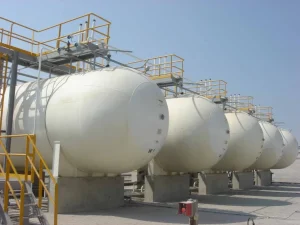
Global supply is expected to grow in 2022 reaching 10.1 million b/d and furthermore in 2023. New gas explorations in the Middle East will contribute to an increase in supply starting in 2024. In the meantime, increased refinery activity and crude production will contribute to supply growth from the region. Globally, the US and Canada remain the largest source of global supply growth through the end of 2023.
Middle East gas development projects will add growth after 2024
With the high prices of natural gas, Gulf Arab producers are looking to tap into gas reserves that can have implications on the NGL markets. Kuwait and Saudi Arabia announced plans to jointly develop the offshore Dorra gas field in the Neutral Zone despite protests from Iran which claims it is entitled to 5 percent of the field. The maritime border between Kuwait and Iran has never been properly delineated. However, the fact that Kuwait and Saudi Arabia are willing to risk antagonizing a regional rival speaks to the importance of developing the gas field for the Arab Gulf countries.
Also in the Middle East, Saudi Arabia has begun exploration of unconventional gas fields at Jafurah which likely begin production in early 2024. Early analysis of the field shows a composition that includes ethane, propane, and pentane in addition to methane. For propane, supply from Saudi Arabia is expected to increase because of this exploration in 2024 and increase to 70,000 b/d by 2030.Overall Middle East LPG supply is expected to increase. Of that growth, much will come from the continued increase in refining activity driven by new capacity in Saudi Arabia and Kuwait.
The global diesel deficit is pushing Middle East refiners to run harder increasing LPG production. The remaining growth will come from fractionation as OPEC+ continues increasing supply. In 2023, supply growth is expected to slow down in the Middle East with refinery supply growing from refineries as new refineries’ production peaks. Outside the Middle East, the US and Canada are still the largest sources of supply growth in 2022 and 2023.
Global supply is expected to average over 10 million b/d for the first time after only previously surpassing that threshold for a few months in 2019 and 2021. Russian supply is expected to drop by 50,000 b/d. However, growth across the other regions will cover the loss in Russian supply easily.
Source: www.esaienergy.com
